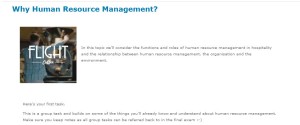
Portfolios have become a BIG topic at WelTec and Whitireia, two closely aligned Wellington (NZ) polytechnics.
While the concept has been around for a while and we have promoted the use of a locally produced ‘product’ Mahara, recent programme changes, due in some ways to NZQA’s Targeted Review of Qualifications (TroQ), have intensified the interest.
It means a change in the trades courses where assessments have traditionally been workbook/exam type with some summative quizzes to tutors considering new ways of how to collect evidence that learners have met learning outcomes.
While we have used Mahara with the Make Up students and tutors it works more successfully with students who are writing reflective pieces and and gathering evidence that requires more writing than sharing images. One of our champion tutors uses Mahara for collaborative portfolios.
Another local ‘product’ (I hate using the words ‘product’, ‘client’ and ‘customer’ in educational contexts even though in this context it is the correct word) is Record of Work which we viewed today. It has been developed for the construction industry and is not, perhaps, quite ready yet for assessment purposes but is quite close. The construction and automotive tutors liked it, when we viewed the presentation and it seems suitable. It is essentially an app to which learners add images and text. While the first users are Unitec in Auckland, New Zealand, we are able to design specifications for our own app. Tutors can view users diaries/records of work on a website. Take a look at the video link above or visit their website.
We’ve also generally discussed with staff that boxes and folders work just fine. A step up could be using PowerPoint and Word templates and having the learners either email them to tutors or have them upload them to Moodle drop boxes, and thus viewed and marked online.
Whatever the mode it is essential that learners are given clear, easy to follow instructions and clear expectations about which learning outcomes are to be met (if they are used for assessment). It is also essential that learners understand what is necessary and what is not (i.e. no dumping) and that you, the tutor, understand why you are using this method and are clear about your process. Consider also adding a marking rubric to the instructions.
It is also extremely important that you understand that while you may be assessing the portfolio in the end it belongs to the learner and not the institution.
JISC have as usual intelligent information to share. Even if they have archived it, it still makes sense. They suggest a six step approach to implementing portfolios: Define, Understand, Prepare, Engage, Implement and Review. Fairly standard practice I’d hope. I particularly like the Implementing e-portfolios checklist. Useful.






